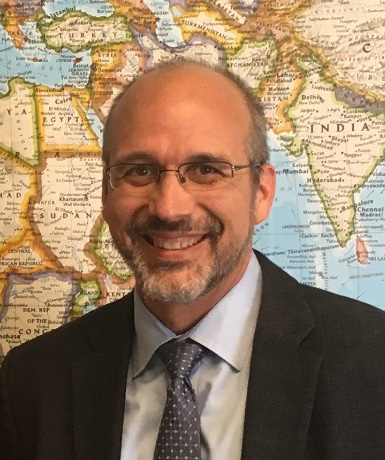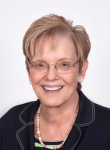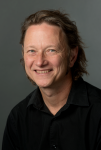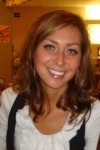From the Executive Director: TESOL's Global Presence
by Christopher Powers
 As I outlined in my October 2018 message last month, increasing our Global Presence and Connectivity is one of the most important outcomes that we are working to realize through the association’s new Strategic Plan.
As I outlined in my October 2018 message last month, increasing our Global Presence and Connectivity is one of the most important outcomes that we are working to realize through the association’s new Strategic Plan.
TESOL has always been an international association. When the original constitution and bylaws of Teachers of English to Speakers of Other Languages (TESOL) were adopted in 1966, our founders deliberately avoided terms such as “American” or “National” because they saw our organization as one that would be international and welcoming of members from throughout the world. We made this commitment even more explicit in 2012 when we updated our name to TESOL International Association. In 1978, we held our first annual convention outside of the United States in Mexico City, Mexico; in 2003, we held our first symposium in Italy; and we have held more than 30 events outside of the United States since. This year, we held our first TESOL China Assembly.
In 2018, our members represent more than 150 countries. Our top five countries include the United States, Japan, Canada, China, and Brazil. Our Board of Directors, whom you elect, reflect this diversity. Counting countries of birth, citizenship, and residence, our 11 board members represent 10 different countries: Brazil, Canada, China, Germany, Malaysia, the Netherlands, New Zealand, Singapore, the United States, and Uruguay.
There are also more than 115 associations across six continents that are members of TESOL’s Affiliate Network. This network not only illustrates both the field’s and the association’s global presence, but our connectivity as well. Affiliate associations serve as valuable partners to TESOL International Association in connecting members, providing expertise and resources, and serving as important contributors and partners in the association’s many events.
Last week, the board met at the TESOL office in Alexandria, Virginia, USA. Intertwined throughout our meetings were discussions about what TESOL’s global presence means to the board members. Luciana de Oliveira (also known as Lu), our first Brazilian and first Latina and Latin American president, spoke movingly about her first experiences as a graduate student facing discrimination as a nonnative English speaker. She spoke about how the experience showed her the power that leaders can have in righting wrongs and also led to her involvement first in California TESOL (CATESOL), and later TESOL International Association. “[The experience] has led me to where I am today,” she said, “in terms of really advocating for nonnative English speakers, members of the LGBTQ community, and in general those who may seem ‘different.’”
Lu and many board members talked about the mentors they encountered in TESOL, who helped them grow and flourish professionally. Equally as important, they talked about how they have provided the same support to others. As Deborah Crusan, professor of English language and literatures at Wright State University in Dayton, Ohio, USA, noted, “I think that it’s really important to make people feel like they have a home in TESOL and that they belong to a community.”
Silvia Laborde, academic director of the Alianza Pocitos-Punta Carretas at the Alianza Cultural Uruguay-Estados Unidos in Montevideo, Uruguay, said that
for a long, long time after I started teaching I felt that we were like an island, professionally speaking, very disconnected from the rest of the profession down in Uruguay. Colleagues would say everything was impossible. Either too difficult, too far, or too something.
By joining TESOL, attending the Convention, and encouraging colleagues to relate more to others outside the country, she was able to help bridge the distance and the disconnect.
Christel Broady, professor of education at Georgetown College in Georgetown, Kentucky, USA, noted that TESOL’s global presence means bringing the world to her aspiring teachers, many of whom have not traveled anywhere:
How can we bring the world to them so that they can understand what the Chinese English learner needs, what the Mexican English learner needs, and what their backgrounds are? TESOL helps me do that—bring the world to them.
These voices, among the thousands of TESOL members, reflect what so many of us feel when we think about the work we do, the places we do it, and the people for whom we work. As one of our staff members summed up, “TESOL makes a small world bigger, and a big world smaller.” I’d love to hear what TESOL’s global presence means to you. I’m looking forward to connecting with you—whether in your home country or mine, face-to-face or online.
Christopher Powers
TESOL Executive Director
Email: cpowers@tesol.org
Twitter: @TESOL_Powers
TESOL Blogs
Interested in writing a blog for TESOL?
Read the submission guidelines and send us your post!
Check out some of the most recent TESOL Blogs:
|
4 Ways Teachers Can Support English Learners, by Judie Haynes
 The school year is well under way, and teachers are beginning to get to know their students and to build relationships with them. The teachers that work with English learners (ELs) should know how crucial their classroom practices are to the success of these students. Here are four essential practices that effective teachers of ELs exhibit in their classrooms: The school year is well under way, and teachers are beginning to get to know their students and to build relationships with them. The teachers that work with English learners (ELs) should know how crucial their classroom practices are to the success of these students. Here are four essential practices that effective teachers of ELs exhibit in their classrooms:
- Demonstrate a positive, asset-based relationship with students.
- Provide scaffolds to support ELs to acquire new information.
- Make use of flexible grouping of students in the classroom.
- Model appreciation of diversity in the classroom.
Following, I’ll discuss these four practices in detail. Read more. |
|
Mapping Engaging Experiences, by Greg Kessler
 One of my favorite resources for language teaching has been maps. There are so many ways that creative teachers can use maps to make engaging experiences for their students. With today’s digitally aggregated, crowdsourced, customized, and mashup map, the potential is even greater. Anyone can create maps that are individualized and customized to their own needs or interests. They can also contribute to online maps as a collaborative act of participatory culture. Websites such as Open Street Map, and the Open Cities Mapping Project are designed for individuals to contribute and co-construct a shared awareness of visual and geographical representation. The easiest of these is Google Maps. Read more. One of my favorite resources for language teaching has been maps. There are so many ways that creative teachers can use maps to make engaging experiences for their students. With today’s digitally aggregated, crowdsourced, customized, and mashup map, the potential is even greater. Anyone can create maps that are individualized and customized to their own needs or interests. They can also contribute to online maps as a collaborative act of participatory culture. Websites such as Open Street Map, and the Open Cities Mapping Project are designed for individuals to contribute and co-construct a shared awareness of visual and geographical representation. The easiest of these is Google Maps. Read more.
|
|
On Campus and Beyond: From Speaking to Writing, Part 2, by Elena Shvidko
 In my previous blog (Part 1), I provided a few suggestions on how speaking activities from two units in the ESL speaking class that I taught this summer could be adjusted and implemented in a writing course. My goal was to create materials and activities for a particular unit in relation to the local campus community and to American society in general. I call this approach “On campus and beyond.” In my previous blog (Part 1), I provided a few suggestions on how speaking activities from two units in the ESL speaking class that I taught this summer could be adjusted and implemented in a writing course. My goal was to create materials and activities for a particular unit in relation to the local campus community and to American society in general. I call this approach “On campus and beyond.”
In today’s blog, I’d like to continue by providing suggestions of writing assignments for the other two units of the course: “Health and Well-Being” and “Cultures and Diversity.” Read more. |